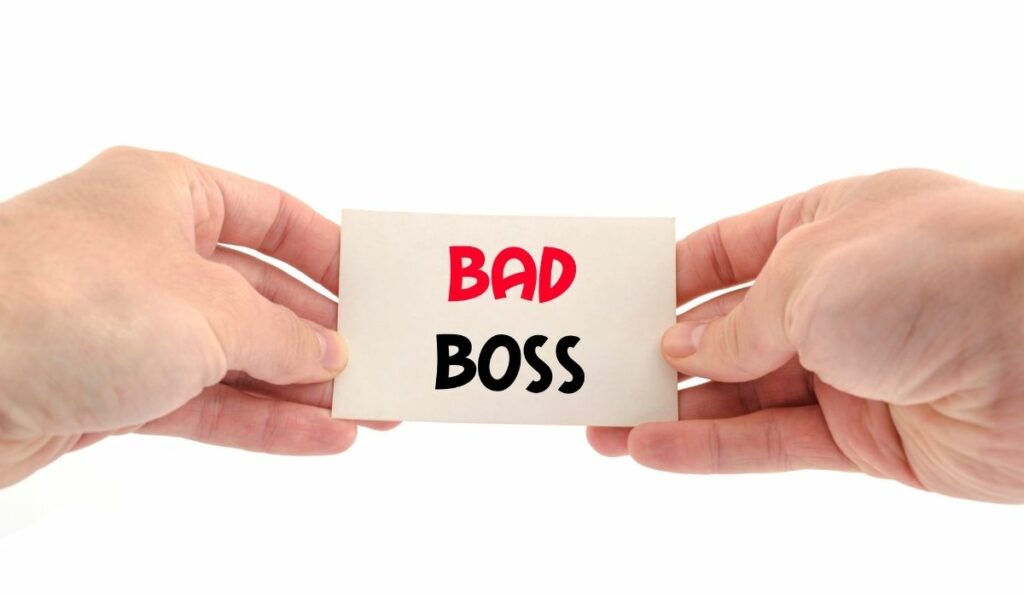The corporate world is a fast-paced and competitive environment. It’s difficult to keep up with the demands of work, with family, and with personal health needs. Health care costs are on the rise and corporate wellness programs have become an attractive option for many companies. They are for those who want to help their employees stay healthy. These can be useful if they’re not always effective at doing so. In this article, we’ll discuss the reasons why corporate wellness programs often fail. It is from perceptions of being “soft” or “fluffy,” to trying too hard to be all things for all people. Corporate wellness programs can seem more like a burden than a benefit.
Contents
- 1 Why Do Corporate Health and Wellness Program Fail?
- 2 Reasons Many Corporate Health and Wellness Programs Fail
- 2.1 Overly Complex Programming
- 2.2 Inappropriate Incentives
- 2.3 Inappropriate Usage of Staff
- 2.4 Poor Leadership Support
- 2.5 Fail To Create Health Promoting Culture and Environment
- 2.6 Wrong Expectations From Programs
- 2.7 Poor Communication Within Company
- 2.8 Non-Functional Wellness Committee
- 2.9 Poor Preparation
- 2.10 Inappropriate Treatment of Programs
- 2.11 Poor Program Marketing
- 3 Conclusion
Why Do Corporate Health and Wellness Program Fail?
The popularity of corporate health and wellness programs is at an all-time high. When they fall short of hitting their goals and objectives, we say they fail. Failure can be defined in a variety of ways.
A corporate health and wellness program might be deemed a failure. This is because it doesn’t achieve its intended outcomes of improving employee health. An example can be lowering healthcare expenditures. However, a wellness program is intended to boost employee morale. These may be effective if it leads to enhanced employee morale. The objectives of any wellness program are crucial.
Most employer health and wellness initiatives incorporate health and wellness programs. These are a means to help employees maintain their health. These can also lower healthcare expenditures. Employee well-being programs that are well implemented succeed. There is a wealth of published medical research that affirms the value of the top wellness programs.
Unfortunately, not all wellness programs are well-designed or organized. They don’t alter employee health behaviors or enhance health risks, and they certainly don’t reduce healthcare expenditures.
Reasons Many Corporate Health and Wellness Programs Fail
Here are the reasons behind the failure of Corporate Health and Wellness Programs:
Overly Complex Programming
 Your corporate health and wellness program should be simple to comprehend and adhere to in order to avoid blunders. Every activity you host should be simple to sign up for. Your incentive plan should be simple to comprehend and quick to complete. A biometric screening appointment should be so simple that a child could handle it.
Your corporate health and wellness program should be simple to comprehend and adhere to in order to avoid blunders. Every activity you host should be simple to sign up for. Your incentive plan should be simple to comprehend and quick to complete. A biometric screening appointment should be so simple that a child could handle it.
To put it another way, you need to remove all of the barriers to participation. This is in order to have a successful program. The easier it is for your workers to participate, the more likely they are to achieve good results.
Most wellness program participants use paper forms and printed materials to report on health risks or participate in a wellness program. The process of producing, printing, shipping, and collecting these items was time-consuming.
All of that has been supplanted by making staff online accessible in most cases. It is a lot easier and more pleasant to participate in nowadays than it was previously. Every company wellness program should be accessible on a computer as well as a mobile device.
Inappropriate Incentives
 Some companies and institutions have used poorly constructed wellness programs, yet all they accomplished was to decrease employee morale. They made the following mistakes:
Some companies and institutions have used poorly constructed wellness programs, yet all they accomplished was to decrease employee morale. They made the following mistakes:
- Employees were given the program down their throats without being given a chance to provide input.
- Despite the fact that they were attempting to communicate about the company’s health program, it wasn’t rolled out until recently.
- Incentives that were stick-based rather than carrot-based (i.e., punish poor conduct)
Most people find it difficult to start and maintain a healthy lifestyle if they are not enthusiastic about it. Humans have a hard time with behavior change.
There are two distinct sorts of incentives. Negative incentives, such as fines or corporal punishment, are one type. The stick approach to employee behavior is used in these programs. They use penalties and fines to encourage workers to improve their health. Positive rewards or reinforcements are the second sort of incentive.
Inappropriate Usage of Staff
Employee safety is a key focus at many worksites. Employees’ safety is a major concern. These businesses would seldom rely on HR to handle their safety initiatives. They generally hire a certified, trained safety professional.
The same may be said for company health and wellness programs. Many small to medium-sized businesses will start a health program by assigning it to the HR department. In general, these wellness programs fail. Asking a current staff member who already has a full-time job to lead an effective wellness program is almost certain to create problems.
Starting a corporate health and wellness program may seem like it begins well. Eventually, the lack of time and expertise to manage and administer a comprehensive wellness program becomes obvious.
Poor Leadership Support
 Many worksites have a health and wellness program. The problem is that the leadership doesn’t always support it. But this does not make the program ineffective. A workplace with strong leadership will also have a good wellness program. It will work well and be helpful.
Many worksites have a health and wellness program. The problem is that the leadership doesn’t always support it. But this does not make the program ineffective. A workplace with strong leadership will also have a good wellness program. It will work well and be helpful.
When you have a worksite wellness committee, the employees own the program and feel like it is their own. They will not think that management is trying to do them something.
Leaders who support the program in strong ways are found among organizations with good leadership backing. They join initiatives, they compete in team competitions, they discuss the wellness program, and they evaluate. They also report the program as well as have personal faith in its advantages. Even if a workplace lacks strong leadership support at the outset, there are things you may do to increase leadership assistance.
Fail To Create Health Promoting Culture and Environment
Adopting healthy behaviors is easy. But the challenge is to keep doing these things even after a while. A worksite that can create a healthy environment and a culture that supports healthy living will have many positive outcomes.
After many years of modest, continuous, and cultural modifications, the entire business begins to appear and feel like a place where people want to work and be healthy. The Checklist to Change is accessible through the wellness portal and aids organizations in developing a culture of health.
Wrong Expectations From Programs
Unfortunately, some organizations believe that having an employee wellness website is the same as having a wellness program. They mistakenly believe that all they need to do to improve their workers’ health and lower healthcare costs. This is to get them to visit the internet. A wellness website isn’t the same as a wellness program.
Insurance providers frequently tout the existence of wellness programs for those firms they protect. This program is usually a web portal with instructional videos and articles on health and well-being. There’s nothing wrong with this online information. The issue stems from their inability to improve one’s health.
Consider a person you know who lives a healthy lifestyle. This individual is almost certainly active on a daily basis, doesn’t smoke, eats a balanced diet, manages their stress well, and has some sort of work-life balance.
When this healthy individual is looking for healthy food, making healthy selections at a restaurant, or exercising outside of the home, they are not using a wellness portal. They’re out in the real world having fun with their friends and family throughout the day, making nutritious lifestyle choices.
Poor Communication Within Company
 Today, there are many more distractions vying for our attention than ever before. If you want your employee wellness program to be successful, you need to communicate it in a variety of ways and at various intervals. Once you’ve created your powerful marketing materials, you’ll need to get them in front of your staff. The days of simply putting up a poster are long gone.
Today, there are many more distractions vying for our attention than ever before. If you want your employee wellness program to be successful, you need to communicate it in a variety of ways and at various intervals. Once you’ve created your powerful marketing materials, you’ll need to get them in front of your staff. The days of simply putting up a poster are long gone.
You are going to need to use email, printed materials, newsletters, your website, posters, tabletop tents, meeting announcements in staff meetings. Moreover, you can also text message people. You can post on Facebook and have streaming videos of the house so people can see it if they want. The best way is for you to tell your spouse or significant
Although you may not be successful in encouraging the employee to join your wellness program, if you focus on the spouses and loved ones of your employees, you will have a better chance of success. Peer pressure from loved ones and significant others can be a major incentive for participation. Without it, your initiatives will fall flat.
Non-Functional Wellness Committee
 Every effective wellness initiative includes a wellness committee made up of a representative sample of workers. Having a committee will enhance your program’s participation because it gives your staff a sense of ownership over the program. When people have control over something and they decide what happens, they want to do it. It becomes their program.
Every effective wellness initiative includes a wellness committee made up of a representative sample of workers. Having a committee will enhance your program’s participation because it gives your staff a sense of ownership over the program. When people have control over something and they decide what happens, they want to do it. It becomes their program.
You’ll need to maintain some control over your health program’s evolution and administration. You can include some of the concepts and recommendations that come from your staff. Some of the ideas might not be very good, but others are easy to do. People can help with these ideas. The program will get a lot done. Your wellness committee might also assist to boost the inherent benefits and drive that comes with participating in the program.
A wellness committee helps with the wellness program. It should not happen from the top-down but from the bottom up. They will help you to feel more involved and they can also help to communicate your program. When your program is successful, don’t forget to thank them because if they were not there, it would not have been successful.
Poor Preparation
 If you don’t work with other people, your wellness program will be vulnerable. A corporate wellness program needs into the company. If it is not, then you will seem as if you do not care about the work health of your employees.
If you don’t work with other people, your wellness program will be vulnerable. A corporate wellness program needs into the company. If it is not, then you will seem as if you do not care about the work health of your employees.
There are a few things you can do to make sure that your employees have a good health and wellness program.
- Every wellness program should create a group of 7 to 12 people from the organization. They should help you to keep your program going. They give you access to many departments at your company.
- Many departments are connected to your efforts in wellness. They include Safety, HR, benefits, marketing, medical, and IT. Make sure to invite someone from these departments to your wellness committee. Invite them and tell them that you can help with their work. If they need help, then you will be able to do the same for them.
- Offer free days off, more money for health insurance, or other benefits to the employees who participate in wellness. Companies with benefits-based incentive programs have 30% higher program participation.
- It is important to work on getting strong leadership support for wellness. You need senior leaders who will participate in your wellness program. They will also give you their support for everything that you do.
Follow these steps, and your business corporate health and wellness programs will gradually seep into the core of your company. When that happens, wellness becomes a part of your corporate culture. You can start to reap the advantages of having a wellness initiative.
Inappropriate Treatment of Programs
Benefits such as health, dental, vision, life, and disability insurance are additional non-wage remunerations. Employers can benefit from them by using them to hire and retain staff. Leadership must make a long-term commitment when they do these things. These are also strategic. They provide benefits like vacation time, flexible work schedules, free food. Another can be a company car which employees can get with little effort.
Perks and benefits are different. The benefits of a corporate wellness program don’t change, but the perks do. The goal in a perk-based wellness program is not to produce positive outcomes or to reach goals. If wellness is to be a benefit, you have to help all employees participate. You have to reward them for participating too. If it is just a perk, you can do whatever you want. When people have a new job, they can get wellness benefits. This is good for them and it helps them live a healthier life.
Poor Program Marketing
 Many years in college either learning about or teaching behavior change models, processes, and strategies. Sadly, on the outside of the Ivory tower, there is a sad truth about our world. Marketing influences human behavior a lot.
Many years in college either learning about or teaching behavior change models, processes, and strategies. Sadly, on the outside of the Ivory tower, there is a sad truth about our world. Marketing influences human behavior a lot.
Good old-fashioned marketing can affect how people live their lives. And well-designed marketing can have an even bigger effect. You need to have effective marketing for your wellness program that will get employees to feel more into it.
Conclusion
In the never-ending quest to improve employee health and lower healthcare costs, corporate wellness programs have become more popular than ever. But they fail when they fall short of accomplishing their goals and objectives. You can state failure in many different ways. For example, a corporate health and wellness program can be a failure if it did not reach its goal of improving employee health. The goal can also be lowering healthcare costs. It is successful if it improves morale among employees.
Do you want to keep your employees happy, healthy, and productive? Join our employee assistance program and get a healthier workplace.


